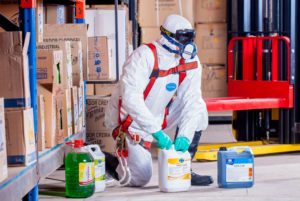Environmental Litigation Explained
Sometimes severe health problems can afflict you or a loved one due to exposure to harsh chemicals or toxicities in water, building materials, air or other environmental factors. The exposure may have occurred several decades ago, resulting in life-threatening disorders or illnesses like cancer.
When the person experiencing these medical issues believes an environmental element is to blame, it may be the negligence of another party that caused their exposure. This may result in environmental litigation.
What Is Environmental Litigation?
Environmental litigation is legal action concerning local, state and federal environmental laws, such as the Clean Water Act and the National Environmental Policy Act. Businesses and individuals dealing with environmental factors like hazardous waste or pesticides must abide by certain laws in order to keep employees and the general public safe. There are several reasons why an environmental claim may be brought forth, including:
- A manufacturer creates and releases a toxic product
- A business uses illegal practices or toxic products in its operations, often to increase profits despite the potential to harm others
- Toxicity of a substance people are exposed to is known, yet the organization regulating the substance or exposing people to it is slow to take action

You may have heard about the connection between asbestos, a mineral used in insulating materials and other building products, and mesothelioma, an aggressive cancer. Environmental litigation against companies that have exposed their workers to asbestos in industries like mining, construction and insulation have resulted in victories for victims who have developed mesothelioma as a result of asbestos exposure.
Another well-known recent environmental disaster that has resulted in legal action is the BP Oil Spill of 2010. These types of cases are intensive and require thorough research, but compensation helps victims and can prevent businesses from committing future offenses. Other types of environmental litigation may involve:
- Environmental rulemaking
- Environmental permits and enforcement
- Damage to or improper use of natural resources and land
- Property contamination
- Water and air pollution
Defendants in environmental litigation cases may range from federal employees to business owners. Sometimes federal agencies, like the Environmental Protection Agency, may be the party a claim is brought against.
Environmental Litigation in Action
One high-profile recent case involving environmental litigation is the Flint water crisis. In 2014, city water testers discovered that the water supply in Flint, Michigan, contained fecal coliform bacteria, which indicated E. coli and other dangerous organisms may have contaminated the water. Despite these dangers, residents were told by city officials that they could continue safely drinking tap water, after pipes were flushed and chlorine was added to the water.
Despite the option to move to a safer water supply, city officials declined to switch in order to keep water rates down. In 2015, children started developing rashes and mysterious illnesses. The same year, a build-up of a cancer-causing byproduct, as well as dangerous levels of lead, were found in the water. A lawsuit was filed that summer against the city but was dismissed in September 2015. Numerous studies confirmed high levels of lead in the drinking water. In November 2015, Flint residents filed a class action lawsuit against state and city officials.
Since then, another class action lawsuit was filed, and criminal charges against state workers were brought forth. A Legionnaires’ outbreak has killed at least 12 people during the water crisis. What health issues continue to emerge due to the local and state governments’ negligence in the Flint water supply are unknown, but legal action involving this environmental disaster may very well continue into several decades from now.

Complexities of Environmental Litigation
Because health issues due to environmental factors may not surface until many years after exposure to toxicity, environmental litigation requires extensive research to prove toxic exposure due to negligence caused problems. Environmental litigation requires:
- A research team that can investigate factors dating up to several decades back
- Scientific experts who are knowledgeable in specific areas
- Significant time and resources to prove a case
Businesses, governments and other powerful entities often have connections to lobbyists and high-profile supporters who can help protect them even when they’re doing harm. When environmental factors cause illnesses, long-term disabilities or even death, justice must be fought for.
What to Do If You Have an Illness You Believe Is Connected to Environmental Toxicity
When mysterious illnesses or those with questionable causes occur, environmental factors may be to blame. Keeping organized medical records is always helpful to a case.
You should consult with a Birmingham environmental litigation attorney as soon as possible, as well. Your case may be similar to others and may help to strengthen a lawsuit against an offending party. Not only do you deserve justice and compensation for your suffering, but an environmental lawsuit can also help to protect others in the future.








